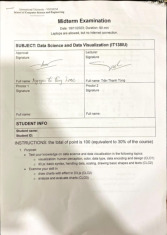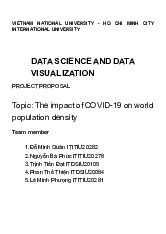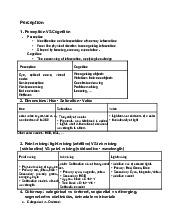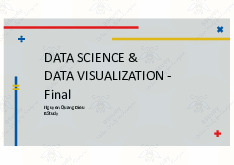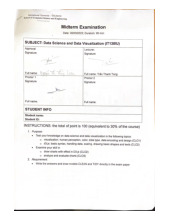



















Preview text:
lOMoAR cPSD| 23136115 PERCEPTION lOMoAR cPSD| 23136115 PERCEPTION - COGNITION Is there something wrong? PERCEPTION Perception
• Identification and interpretation of sensory information lOMoAR cPSD| 23136115
• From the physical stimulus to recognizing information
• Shaped by learning, memory, expectation Cognition
• The processing of information, applying knowledge
Hear someone speak: Perception
Understand the language and the words: Cognition
PERCEPTION VS. COGNITION PERCEPTION COGNITION Eye, optical nerve, visual Recognizing objects cortex Relations between objects Basic perception Conclusion drawing First processing Problem solving lOMoAR cPSD| 23136115 Not conscious Learning, … Reflexes PERCEPTION - COGNITION WHAT IS THERE lOMoAR cPSD| 23136115 VS WHAT DO WE SEE lOMoAR cPSD| 23136115 Emergence Images lOMoAR cPSD| 23136115
http://graphics.stanford.edu/~niloy/research/emergence/emergence_image_siga_09.html lOMoAR cPSD| 23136115
OUR PERCEPTION IS BASED ON PRIORS We have a model of the world
We try to fit what we see into this model lOMoAR cPSD| 23136115 lOMoAR cPSD| 23136115 lOMoAR cPSD| 23136115 lOMoAR cPSD| 23136115 WHO DO YOU SEE? lOMoAR cPSD| 23136115 lOMoAR cPSD| 23136115 OUR EYE HUMAN VISUAL SYSTEM Cone cells: for color vision. - Dense in the center. Fovea has only cone cells Rods cells: for black/white lOMoAR cPSD| 23136115 COLOR VISION 3 types of cone with different sensitivity to light: - Red (63%) - Green (31%) - Blue (6%) lOMoAR cPSD| 23136115 VISUAL ACUITY lOMoAR cPSD| 23136115 lOMoAR cPSD| 23136115 HUMAN VISUAL SYSTEM Not similar to a camera Vision works as sequence of
• Fixation: maintaining gaze on single location (200-600 ms)
• Saccades: moving between
different locations (20-100 ms) HUMAN VISUAL SYSTEM No general purpose vision
What we see depends on our goals and expectations Relative judgements: strong Absolute judgments: weak lOMoAR cPSD| 23136115 Ames Room lOMoAR cPSD| 23136115 AMES ROOM
